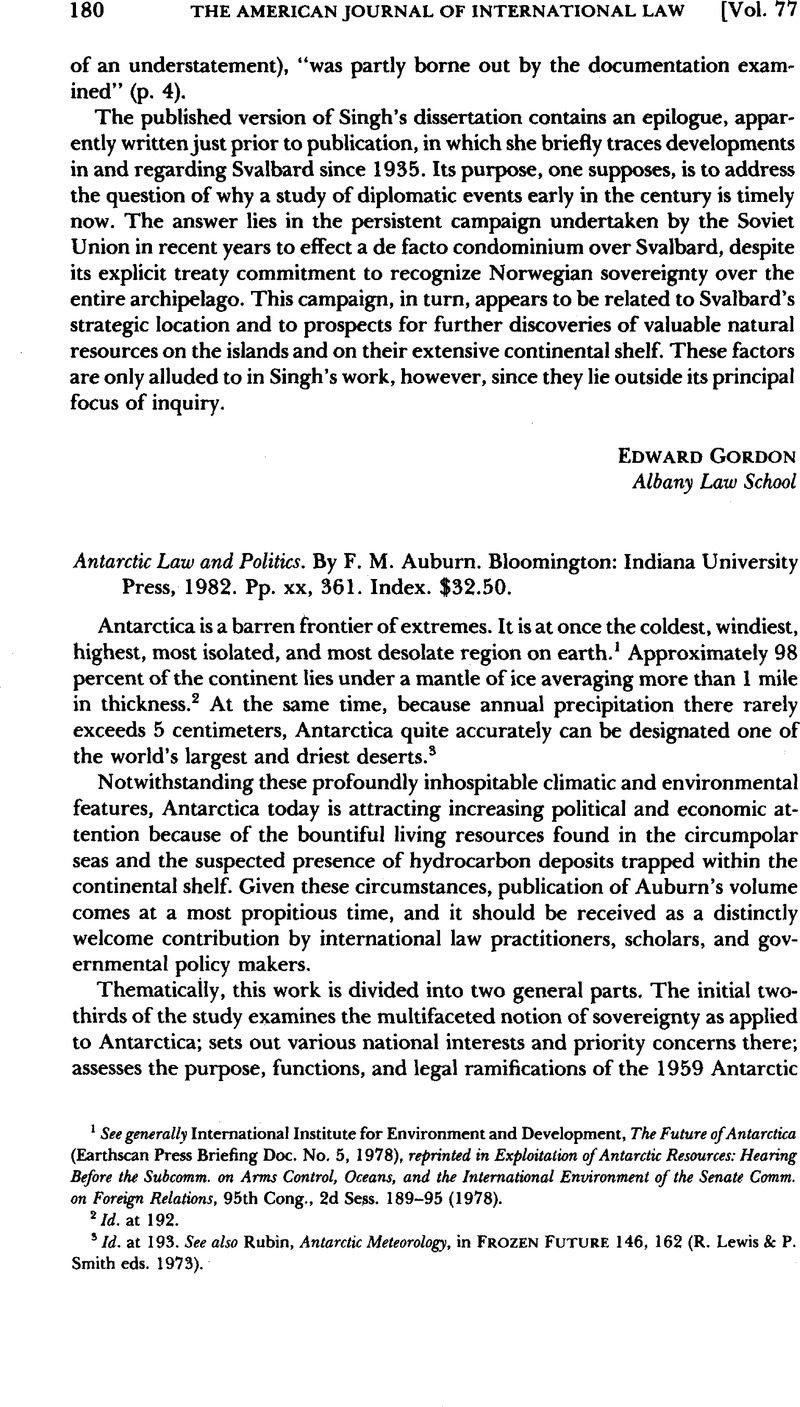No CrossRef data available.
Published online by Cambridge University Press: 27 February 2017

1 See generally International Institute for Environment and Development, The Future of Antarctica (Earthscan Press Briefing Doc. No. 5, 1978), reprinted in Exploitation of Antarctic Resources: Hearing Before the Subcomm. on Arms Control, Oceans, and the International Environment of the Senate Comm. on Foreign Relations, 95th Cong., 2d Sess. 189–95 (1978).
2 Id. at 192.
3 Id. at 193. See also Rubin, , Antarctic Meteorology, in Frozen Future 146, 162 ( Lewis, R. & Smith, P. eds. 1973)Google Scholar.
4 Antarctic Treaty, Dec. 1, 1959, 12 UST 794, TIAS No. 4780, 402 UNTS 71 (entered into force June 23, 1961).
5 The Consultative Parties include the 12 original Treaty members (viz., Argentina, Australia, Belgium, Chile, France, Japan, New Zealand, Norway, South Africa, the Soviet Union, the United Kingdom, and the United States). Since 1959, three other nations—Poland, East Germany, and West Germany—have been accorded Consultative Party status. Nonconsultative parties to the Treaty include Czechoslovakia, Denmark, the Netherlands, Bulgaria, Romania, and Brazil.
6 A tiny, shrimplike crustacean, krill conceivably could supply annual sustainable yields of 150 million tons in additional protein. Tetra Tech, the Antarctic Krill Resource: Prospects for Commercial Exploitation 121 (1978). See also Green, K. A., Role of Krill in The Antarctic Marine Ecosystem (1977)Google Scholar; and Grantham, G., The Utilization of Krill (1977)Google Scholar.
7 Convention for the Conservation of Antarctic Seals, done June 1, 1972, 29 UST 441, TIAS No. 8826 (entered into force for the United States Mar. 11, 1978).
8 Opened for signature May 20, 1980, entered into force April 7, 1982, reprinted in 19 ILM 841 (1980).
9 Article IX(f) of the Antarctic Treaty contains the only reference to “resources,” and designates “preservation and conservation of living resources in Antarctica” to be an apt measure for discussion at Consultative Party meetings.
10 Included among these are texts of the Antarctic Treaty (1959), the Agreed Measures for the Conservation of Antarctic Fauna and Flora (1964), the Antarctic Seals Convention (1972), and the Convention on the Conservation of Antarctic Marine Living Resources (1980).